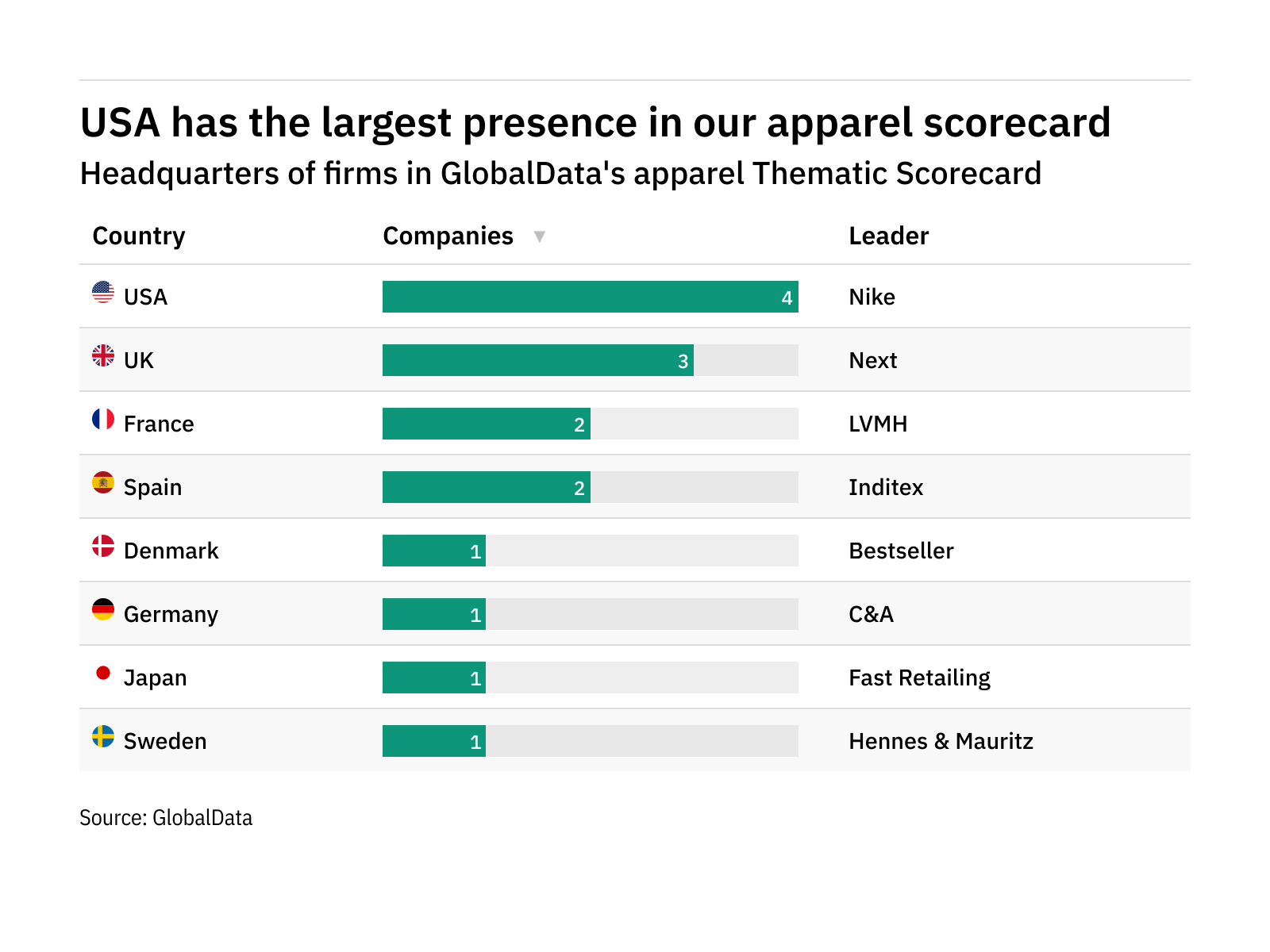
Nike, Inc is the fashion and accessories company best positioned to take advantage of future apparel disruption in the industry, according to GlobalData analysts.
The US-based company comes top of the list in a ranking of overall leadership in the themes that matter most among apparel companies.
These themes, which can be defined as any issues that keep CEOs awake at night, describe technological, macroeconomic, and industry-specific challenges that companies are currently facing, as well as the opportunities they create. GlobalData’s Thematic Research ecosystem identifies and tracks these challenges, and how they create the long-term winners and losers of the mining industry.
Nike scored highly in several themes, particularly when it comes to e-commerce and virtual and augmented reality, where it received top marks of five out of five.
Nike received scores of four for ESG, Covid-19, smart supply chain, artificial intelligence, digital media, mobile and strategic partnerships; and two for geopolitics performances.
These scores represent GlobalData analysts’ assessments of the competitiveness of each company regarding a particular theme. They are then weighted based on their importance and used to create the final industry ranking.
Nike is followed in the ranking by Foot Locker, LVMH, and Kering.
The interactive graphic below allows a comparison of company ratings across the ten themes in question. The higher up a company is on the list, the better positioned it is to weather disruption in the future, while the companies at the bottom are more vulnerable to disruptive threats.
Click on any of the companies to compare them across all the themes in the analysis.
The analysis reveals that companies from France are some of the best-prepared players in the apparel game. Companies from US and Spain also performed well.
These scores are based on overall technology, macroeconomic and sector-specific leadership in ten of the key themes that matter most to the mining industry and are generated by GlobalData analysts' assessments.
This article is based on GlobalData research figures as of 15 August, 2022. For more up-to-date figures, check the GlobalData website.




